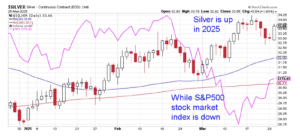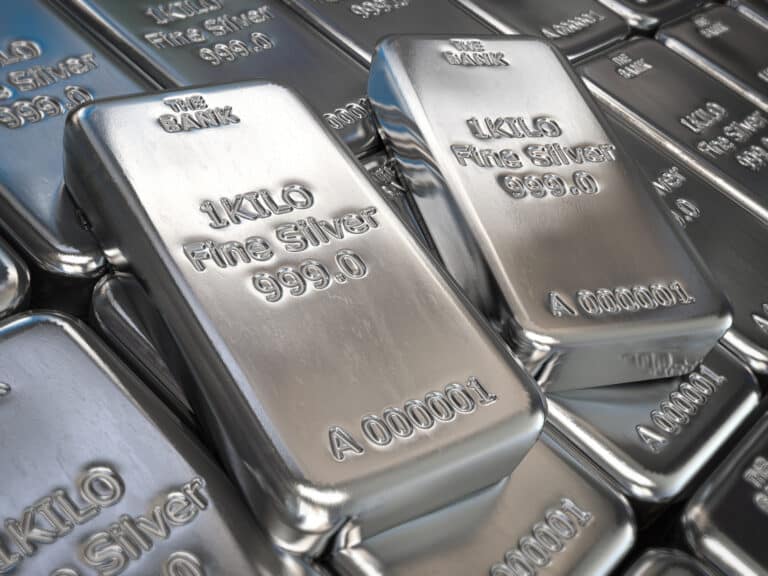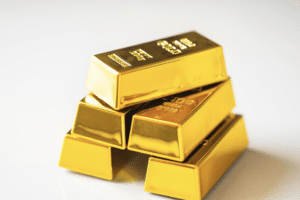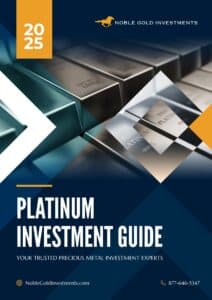1. Introduction: Why Silver’s Strength Is Turning Heads Again
Silver has quietly surged in 2025, grabbing the attention of investors who see more than just a market rebound—it could be the early signs of a full-blown short squeeze.
While major indices like the S&P 500 have stumbled amid economic uncertainty, silver has outperformed, remaining comfortably above both its 50-day and 200-day moving averages.
The chart below shows just how far silver has pulled ahead of the broader stock market in 2025.
Chart comparing 2025 silver price vs S&P 500 index showing silver strength during stock market pullback

That kind of resilience is turning heads and sparking a serious question among analysts and traders:
Is silver gearing up for a major short squeeze?
2. What Is a Short Squeeze—and How Could It Unfold in the Silver Market?
A short squeeze occurs when traders who have bet against a price rise—by shorting—are forced to buy back positions rapidly as the price rises, creating a loop of accelerated buying that pushes the price even higher.
In silver, a squeeze can play out on both the COMEX futures exchange and in the physical bullion market through the London Bullion Market Association (LBMA).
For a squeeze to take hold, conditions usually involve:
- A large number of short positions
- A rising price trend against bearish expectations
- Tight physical supply, limiting how shorts can cover
We’ve seen an attempt before—most notably in 2021, following the viral GameStop squeeze that rattled Wall Street.
Flashback: The 2021 Silver Squeeze Attempt
After the GameStop short squeeze in early 2021, Reddit’s r/WallStreetSilver community set its sights on silver. Enthusiastic retail traders flooded the market, briefly sending silver to just over $30/oz—its highest level in nearly a decade.
But the move didn’t last.
Why the 2021 squeeze fizzled:
- The COMEX paper market was too large and liquid for retail traders to overwhelm
- Institutional shorts cut their losses quickly, muting further panic buying
- Exchanges raised margin requirements, tamping down speculation
Still, the episode proved that silver’s price can shift quickly with enough momentum—and that many investors are ready to challenge what they see as long-standing price suppression.
Worth noting: Silver’s all-time high occurred in April 2011, when it touched nearly $50/oz, driven by inflation fears, currency concerns, and massive investor interest. The rally collapsed after a series of margin hikes and a cooling economy. Yet with current inflation concerns, renewed investor appetite, and rapidly growing industrial demand, some believe silver could be headed for a new high soon, regardless of whether a short squeeze unfolds.
3. Shifting Focus: From COMEX to the LBMA
While the spotlight often shines on COMEX, in 2025 the real pressure is building in the London market.
The London Bullion Market Association (LBMA) is the central hub for physical silver trading between refiners, banks, and institutions. And lately, the system there is showing major signs of strain.
Charts showing Silver lease rates hit near 7%, and Silver is moving from London to New York
🔎 Recent data shows:
- LBMA silver vault holdings have dropped by over 128 million ounces since November
- The ratio of available silver to ETF holdings has hit 1:1, meaning there’s effectively no free-floating silver
- Silver borrowing rates in London hit 7% in January, a sign of severe tightness
ANZ Bank reports that the LBMA is now at serious risk of a true physical short squeeze as inventories drop and swap dealers stay heavily short.
“This isn’t just tight—it’s the tightest we’ve seen since 2020.”
— ANZ Bank Analyst, via Scottsdale Mint Report
With COMEX relatively stable for now, many believe London is the market most likely to trigger a true squeeze scenario.
4. What the COT and COMEX Data Still Tell Us
Even though London is showing more acute stress, COMEX data still offers valuable insight into the broader market sentiment and positioning.
According to the March 2025 Commitment of Traders (COT) report:
- Commercial traders are holding a massive net short position of 81,655 contracts
- Non-commercial (speculative) traders are heavily net long
Chart showing net positions in silver futures (commercials vs non-commercials) from 2016 to March 2025, highlighting historically high commercial short positions alongside rising silver price.
This kind of divergence suggests tension: commercial traders may be hedging, but if physical stress spreads from London to COMEX, they could be forced to unwind those shorts quickly, creating a powerful upward momentum in prices.
5. The Case for a Silver Short Squeeze
The setup is becoming harder to ignore:
- Physical silver is becoming extremely scarce in London
- Bullion borrowing rates are spiking, showing lenders are unwilling to part with metal
- Silver ETFs are absorbing metal at a rapid pace, adding strain
- Short positions remain historically elevated on both LBMA and COMEX
The feedback loop is building.
This time, the pressure may not start with retail traders—it could begin in the heart of the institutional system, as vaults run dry and short sellers scramble to find metal. That pressure could cascade through the futures market and ETF space in quick succession.
6. Silver Trusts Under Pressure: PSLV, SLV, and the Battle Over Physical
While futures and vault data dominate headlines, the real battleground for silver may now be in ETFs, particularly the contrast between SLV and PSLV.
6.1 SLV: Still the King of Paper Silver
SLV remains the largest silver ETF, backed by JPMorgan. It’s a favorite for institutional money, but often criticized for its lack of transparency and the nature of its “paper silver” exposure.
- As of February 2025, over 49 million shares of SLV are sold short, about 10% of total shares
- This is down from earlier highs, but still above historical norms
- Some investors question whether SLV is truly backed 1:1 by physical silver, or if it masks systemic shortages
Many argue SLV has been used to artificially suppress silver prices by simulating supply where none exists.
6.2 PSLV: Physical Silver… Also Under Attack?
PSLV, run by Sprott, is designed to be different—fully allocated, redeemable, and backed by real silver stored in Canadian vaults.
Surprisingly, it’s now also under pressure.
Short interest in PSLV has surged to nearly 25 million shares—the highest ever recorded, even surpassing the 2021 squeeze attempt.
Chart showing PSLV short interest spiking to 24.8 million shares in March 2025, eclipsing all prior highs
Analysts believe this may be a coordinated move to suppress upward pressure in physical silver by shorting the most transparent ETF.
Shorting PSLV achieves two things:
- It dulls upward momentum in the physical market
- It artificially inflates supply perception, despite tight conditions
The result? It looks like silver is readily available, even as the real supply becomes scarcer.
6.3 A War Between Physical and Paper
- SLV = Heavily shorted, paper-based, opaque
- PSLV = Fully allocated, transparent—and now under attack
This divide reflects a much larger battle playing out in the silver world: real metal vs financial derivatives. And if the physical side starts winning, prices could move quickly and violently.
7. Barriers to a Silver Squeeze
Still, there are real obstacles.
- The COMEX market is enormous, with the ability to roll short positions indefinitely
- Commercials often hedge production, not speculate
- Exchanges can change rules, raise margins, or intervene
- If industrial users panic, large institutions or governments could step in to stabilize the market
Bottom line: a short squeeze is possible—but it won’t be easy. It would likely take a confluence of events: continued physical strain, investor momentum, and perhaps a macro shock to set it off.
8. What Investors Should Watch For
If you’re trying to stay ahead of the curve, here’s what to monitor:
- LBMA vault inventory—are holdings still falling?
- Silver borrowing/leasing rates—do they keep climbing?
- ETF flows—are investors continuing to demand physical?
- COT reports—do commercial shorts start to unwind?
- Online chatter—if retail momentum returns, it could add fuel
Also, keep an eye on the broader macro landscape: dollar strength, interest rates, inflation expectations, and gold. These all shape silver sentiment.
9. Could the Next Silver Shock Be Around the Corner?
Silver has always been unpredictable, but in 2025, the risk/reward setup looks more asymmetrical than it has in years.
The 2021 short squeeze failed to break the system. But the 2025 market looks very different—vaults are thinner, industrial demand is rising, and institutional short interest is still enormous.
No one knows if a full squeeze will play out, but conditions are aligning.
And this time, it may not begin with Reddit—it may start in the very center of the global silver trade.
Whether it’s a squeeze, an industrial demand shock, or a fiat currency reset, silver is positioned for explosive upside. When that moment comes, holding physical metal could be the difference between riding the wave or being crushed by it.







